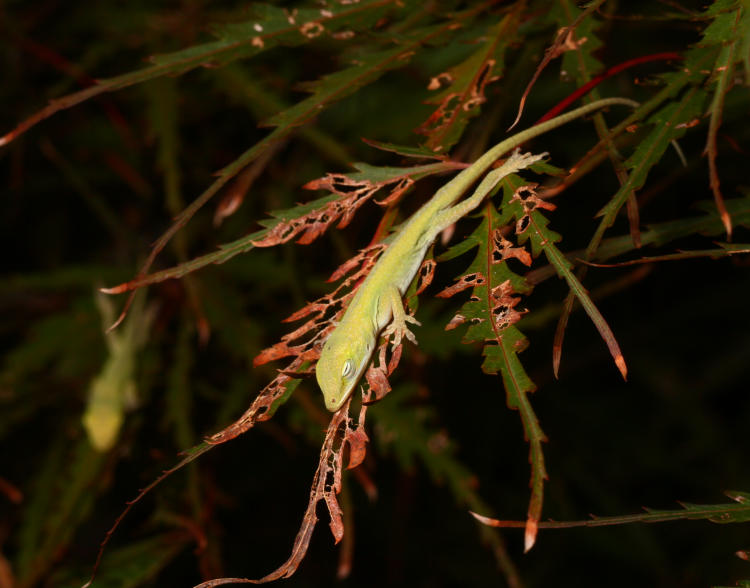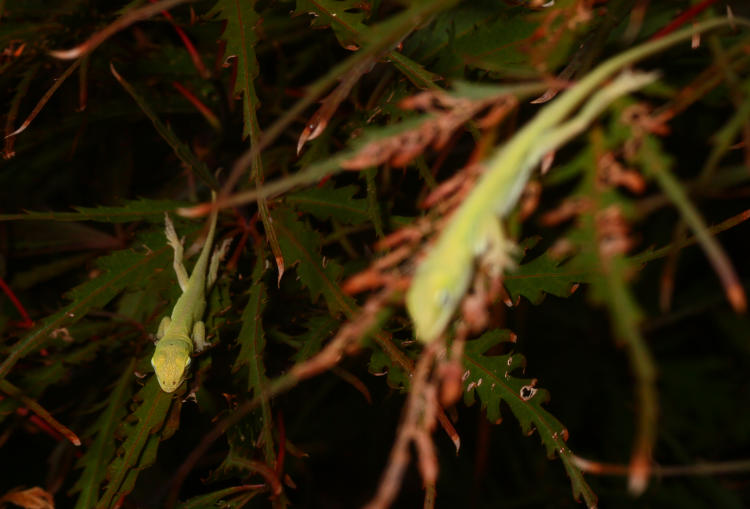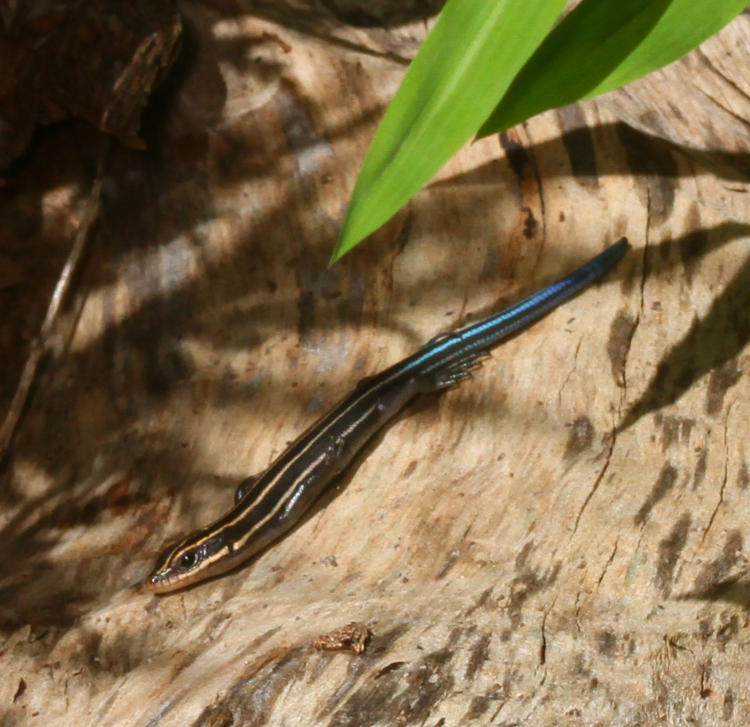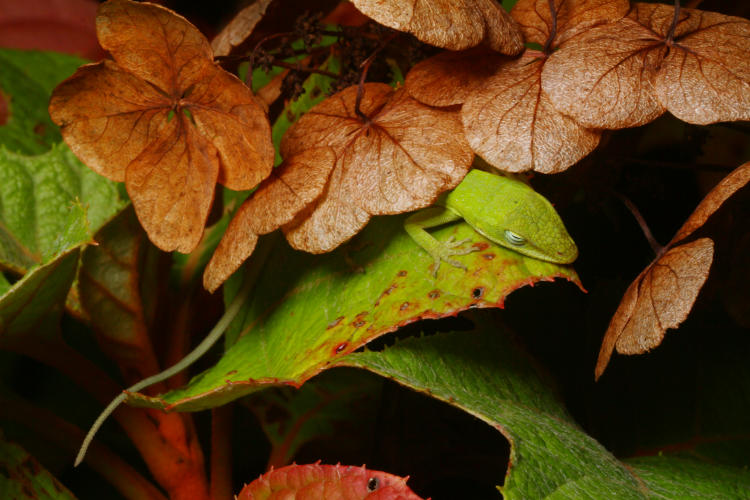I actually have photos from three different sessions to get to, but we’re only going to feature one right at the moment, from early last night as I stepped out to do my routine patrol of the yard. After having not seen much of the bebby Carolina anoles (Anolis carolinensis) since the heavy rains a few days ago, save for a token appearance on a decorative sweet potato leaf, I finally found one snoozing on the Japanese maple near the front door.

This particular spray of leaves looks a little tattered, but the tree is doing fine, it just had to weather the drought with everything else.
But wait! did you see it?

Yes, the second anole was sleeping right alongside the first – they’re literally a hand-span apart here. This is the first I’ve seen them in close proximity – before this, they’d appeared to have somewhat specific territories, one staking out the Japanese maple and its immediate environs (which included the basil plants, one of the butterfly bushes, and the front plants with the sweet potatos,) and the other on the sidewalk pots (including two more butterfly bushes, two gardenias, and two hostas.) I’ve watched the species enough to know that, as adults at least, they move on from a favored area after a few weeks, but it’s funny to see them this close together. My initial info source claimed me that anoles only have one live offspring at a time, but Wikipedia says otherwise: the females lay a small clutch of one or two eggs, which they may do several times during a breeding season – this makes more sense. It also means these two may be siblings, so territoriality might be less of an issue, or they simply haven’t developed such a thing yet.
I’m going to depart my claim of showing pictures from last night to insert a small comparison, while I’m on the subject.

This is from a day previous to those above, and is the other newborn in the immediate area, an American five-lined skink (Plestiodon fasciatus,) basking in its usual location, on a beaver-stripped trunk section that sits directly underneath the same Japanese maple. The two species have different habits and haunts, the skinks being more terrestrial, but there’s overlap, and this particular one is now missing the tip of its tail. The newborns are all comparable in size, overall not 60mm in length, though the skink seems to be just a tad more hefty than the anoles – I’m not going to get them onto a gram scale anytime soon for precise comparison. So, what took off this one’s tail tip? Was there a rumble with one of the anoles? Or just being careless with the table saw? I’ll never know.
Back to last night. With the luck in capturing the two anoles in the same frame, I had to check out the oak-leaf hydrangea in The Jungle (the varied patch near the front of the property that easily gets overgrown.) Sure enough, I found my charge there.

I started finding this anole on the hydrangea a few days previous, but it’s a lot better about camouflaging itself than the others, and I may simply have been missing it before. It also appears to be noticeably longer, though not by a lot – 15mm at most – and with what I’ve seen of their apparent growth so far, this might actually be last year’s brood, possibly even one of those I was photographing then. This one stirred enough at my presence to open an eye lazily, but I suspect all they can see at such times is the glare of the headlamp as I endeavor to make as little noise as possible, and they almost always close their eyes again soon, even when the burst of the flash might make them start a tiny bit. Getting this close in daylight is much more challenging.
Very close by, I found another subject.

Curiously, this might be the same Chinese mantis (Tenodera sinensis) that was foraging extremely close to a sleeping anole on the basil, about two weeks ago, that I eventually moved away from that location because I was concerned that it might prey on the bebby anoles. We’re talking different magnification here, since I couldn’t get as close to this one, but it’s half-again as long as the anoles, and mantids will eat just about anything. So I transplanted it to this hydrangea, before I discovered a juvenile anole staking this area out, and hadn’t seen it again until last night. They’ll just have to work it out for themselves, and while I’m fond of the anoles and want to keep them established on the property, this doesn’t mean I won’t get images if one falls to a mantis, or indeed anything else. Dedicated nature-photojournalist and all that.
We’ll go back one subject, for a variation image that I like.

Aren’t they adorable when they’re sleeping? I had to include this one for the scale detail, but just now, I went out for an accurate measurement – the anole is off foraging someplace, but the flowers are still there, and they measure 30mm across the entire blossom, about half-again as wide as your thumb. We’re still talking bitty little lizards here.




















































